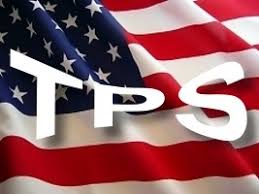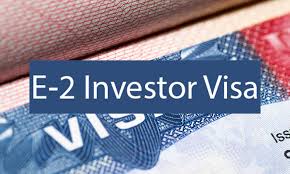POSTING DATE: June 17, 2019
Learn More About:
Immigration News & Updates eNewsletter © 2011 - 2019
For questions about U.S. Residency, Green Cards and Immigration Visas, Visit our Website at: www.ImmigrateToday.com or call our office at: (954) 382-5378
Check Out This Cool Stuff For Immigrants....
Immigration
Questions & Answers
This Week's Immigration News
Question: I filed for my mom in late 2017 and immigration is just now getting around to letting her start immigrating. The problem is that last year I got a letter from a visa center saying that I need to register my mom’s case and pay some bills. I don’t have a computer so I had a friend help me with that. I sent them the taxes and other documents they said they needed. After that they kept sending me letters saying they don’t no longer accept paper documents and saying something about doing it through ceac. Well after going through this for so many months and calling them and telling them I don’t understand what they want I am at my wits end and my mother is wondering what is taking so long. My friend doesn have a way to scan the papers they say I need and I don’t know what to do. My friend said you helped her dad last year and I want to get things straight and get through this so my mother can come up as quick as possible, can you please tell me if this is something you or someone else can help me with?
Answer: Yes, absolutely we can take care of National Visa Center processing for you. These days, most consular processing is done “paperless”, through a system called the Consular Electronic Application Center (CEAC). The process can be quick under the system, but unfortunately, it is not very friendly to use, even for many who are “technically savvy”, since documents must be provided in the exact format which the CEAC system requires. This can be quite confusing to those who are not familiar with its requirements and interpreting what its often “cryptic” error messages mean. In cases like yours, we will provide you with a comprehensive list of documents to provide to us in paper form. We will then take care of scanning and uploading everything, then guiding you and your mother through the entire process until she is happily here in the U.S. with her Green Card in her hand. See you soon!
Helpful Immigration Tips You Can Use...
Immigration News & Updates eNewsletter
eNewsletter
As many experts forecasted, the Family Immigration Category for Spouses and Minor Children of U.S. Residents (called F2A) will become current as of July 1, 2019. In an earlier immigration update, I predicted that the benefit might only extend to the Visa Bulletin Chart B, Dates For Filing for those filing Residency inside the U.S.. However the Visa Bulletin for July shows that the Chart A for F2A is current for all countries world-wide! Yay!
So what does this mean? What are the benefits! Well first, it means that family petitions filed by U.S. Residents (Green Card holders) for their spouses and minor children who are abroad will now be processed in the same time-frame as those for U.S. Citizens (called “Immediate Relatives”), meaning there is no visa waiting line, only regular USCIS and Consular Processing.
News Flash: Beginning July 1st, Spouses And Minor Children Of Green Card Holders Can File For Residency!!!
Immigration How To:
How Do I Know If My Medical Has Expired?
Trump May Grant TPS Status To Venezuelans Currently Inside The U.S.
Important Tips On Medical Exam Validity
Late last year, the USCIS announced a policy change for the medical examination required for Residency cases. Since November 1, 2018, medical examinations (form I-693) are valid for two years from the date signed by the doctor. However, the new policy also added a restriction on validity of the exam prior to submission, requiring that medical exams be submitted to the USCIS within 60 days of issuance (signature date). Medical exams submitted later than 60 days from the date of issuance are rejected. As a result, these days, it’s always best to have the medical exam performed just prior to residency case submission (the last thing on your check-off list). The change in policy is due in part to extremely lengthy USCIS residency case processing, often taking from one to two years in some cases.
Amid pressure from Senate Republicans, Trump told reporters last week that he was looking “very seriously” into the possibility of granting temporary protected status to Venezuelans. Escalating political turmoil in Venezuela over the past several years has caused thousands of Venezuelans to flee the country, seeking refuge in the U.S.. And while many have applied for asylum here to escape the dangerous conditions caused by increasing crime, hyperinflation, food, electricity and medicine shortages, under tough U.S. asylum eligibility requirement, most will likely not qualify.
In March, the “Venezuela TPS Act of 2019” was introduced in the Senate and a letter was sent by 23 Democratic and one Republican Senator to the Whitehouse requesting that the administration provide temporary protected status (TPS) to Venezuelan citizens currently in the U.S., to protect them from deportation.
E-2 Investor Visas Now Available For Citizens of New Zealand
Under a Treaty between the U.S. and New Zealand, the E-2 Investor’s Visa became available to New Zealanders who wish to invest in purchasing an existing U.S. business or starting their own business in the U.S.. The KIWI Act, or Knowledgeable Innovators and Worthy Investors Act, signed into law on August 1st, adds New Zealand to the list of eligible countries participating in the E-2 Visa program.
The E-2 Treaty Investor Visa is a little known, but perfect visa option for many foreign investors who want to open a new business or buy an existing one in the U.S..
Question: I have a question about filing for my wife. I filed for her 130 application last year and since that time while waiting for her to immigrate, we have been visiting each other every few months. She came up here for a visit last month and is still here and according to your news article last week, she can stay and file for her work and green card here. But I want to make sure I get this right. In April I got a letter from immigration saying I have to go online and pay some bills for my wifes case, which I did, $445 in all. Now I see it costs $1225 to file for her residency and work card. Is the $1225 in addition to the $445 I already paid or will they give me a refund for that money since she will stay here and not go through the consulate? Thanks.
Answer: Great question. What you are referring to are the National Visa Center (NVC) fees. Once a case is approved by the USCIS and ready for consular processing, the NVC notifies the petitioner that the case is ready for consular processing and gives instructions on going online and paying the NVC fees for the Affidavit of Support (AOS) and Immigrant Visa fees (IV). Those fees should only be paid for a relative who is outside the U.S. and will be going through the U.S. consulate abroad. The fees are not applicable to those who are adjusting status in the U.S., since they are required to pay different fees for the process inside the U.S.. Unfortunately, once those fees are paid, there is no way to get a refund, so if you want your wife to stay in the U.S. and go through the adjustment of status to residency process here, you will need to pay the additional fee of $1,225. With that said, you should know that since consular processing has begun for your wife, it may only take about four more months for her to complete both consular processing and her immigrant visa interview and be ready to immigrate to the U.S. and get her Green Card. If she decides to stay in the U.S. and file for adjustment of status, under ever increasing processing times, it could take between one to two years for her go to get her Green Card. This will delay her eligibility to file for early naturalization. So, think it over, perhaps you might want to reconsider having her go home and complete the consular process abroad, since she is so near to completion. Let me know if you have any questions or want our assistance in handling her Residency or NVC process.
Question: I got my citizenship back in 2012 then filed for my son and his wife. Due to marital difficulty, my son informed me last night that he and his wife are divorcing and she already put in the papers. As bad as that is, it is my understanding that he should be able to immigrate sooner now. My worry is about my granddaughter who is 8, whether she can immigrate with my son, even if her mom does not. I am wondering if you can take my case to get my sons immigration expedited and find a way to allow him to bring his daughter with him to the U.S.?
Answer: Yes, once your son’s divorce is final, we can contact the National Visa Center (NVC) and have them upgrade his case from the F3 Immigration category for married children of U.S. Citizens to the F1 Immigration category for adult single children of U.S. Citizens. The F1 category includes minor children up to age 21. So you don’t need to worry about your granddaughter, she will be able to immigrate along with your son as long as her mother agrees. Right now, there are immigrant visas available in the F1 category for I-130 petitions, which were filed in March 2012, so as long as your son’s case was filed in early 2012, he may be able to begin the final consular process this year or early next year. I will email you a list of the documents you will need to provide me to covert the case.
Avoiding Common Mistakes When Submitting Affidavits Of Support
Filing an Affidavit of Support (form I-864) is required in nearly all family sponsored immigration cases. The law specifies that all sponsors complete form I-864 and provide financial documentation to prove that they meet the minimum requirements to sponsor their loved ones. A sponsor is the U.S. Citizen or Resident family member who has filed for his or her relative to immigrate to the U.S.
In cases where a sponsor does not work or have enough income to meet the requirements and has a Joint Sponsor who does qualify, it’s important to understand that the sponsor is still required to file an Affidavit of Support and provide financial documentation in addition to that of the Joint Sponsor.
So the main benefit is that the process should generally now take only about a year or a little more, as long as the case is filed properly, instead of the more than two years that it took in the past. Second, for spouses and minor children of U.S. Residents who are legally inside the U.S. on or after July 1st, both the family petition (I-130) and Residency application (I-485) can be filed “concurrently” (at the same time) , this benefit allows them to legally stay inside the U.S. to live, work and attend school while waiting for their Green Cards!
However, as with many immigration benefits, this opportunity may not last long, since the more individuals who apply, the more likely that the F2A category will once again become backlogged and waiting lines will resume. This means that couples who have been putting off marriage should just go for it now and get their application in quick in order to take advantage before its too late. Spouses and minor children of U.S. Residents who are visiting the U.S. can legally file their residency applications on July 1st without the need to return home. And while this is good news for thousands of families, it is important to understand that it does not benefit those who are inside the U.S. and are not in legal status (expired I-94), since they are not eligible to apply for residency. Remember, this temporary policy can be a fantastic opportunity for those who qualify and a nightmare for those who file for residency, but are not eligible. I’m offering free consultations for any immigrants who believe they qualify under the announced early residency filing opportunity, so find out the facts first, BEFORE filing.
Read the July 2019 Visa Bulletin
You can give me a call at: 954-382-5378. Tell my Legal Assistant Frances
that you want to talk to Caroly to find out if you qualify for early residency filing.
Since that time, the Whitehouse has remained silent on the issue, fearful of angering Trump’s anti-immigrant base of supporters who see any effort to help immigrants as a violation of his promise to get tough on immigration.
But the fight between Venezuelan President Maduro and Trump may have just gotten personal enough for Trump to want to push back on Maduro by granting TPS status to Venezuelans as a prelude to some further planned actions by the U.S. against the leader.
So as the pressure on the Whitehouse from some members of Congress gets more intense and the flow of Venezuelan refugees continues to rise, Trump may have to come up with a good marketing strategy to convince his supporters that his decision to grant TPS status to Venezuelans is really part of his tough immigration policy…..
Read the Venezuela TPS Act of 2019
For qualifying investors, the E-2 is a low cost alternative to the $1 Million dollar EB-5 visa, which allows both the Investor and their immediate family members to live, work and attend school in the U.S., while operating their own business. When Immigrants hear “Investor visa”, they usually think of the high cost EB-5 Investor Visa, when in reality, a successful E-2 visa can be obtained for up to five years (renewable) by investing around $100,000 in your own business. A wide range of business types qualify under the E-2, including start-up, franchises and existing businesses. One of the only few requirements is that the business enterprise must be operated from a commercial location (not a home) and it must create new jobs or preserve the jobs of existing employees. However, not all business types qualify, specifically because some investments, like those in real estate do not generate jobs. To qualify, an investor must be a national of one of the treaty countries on the State Department list that has an E-2 treaty with the U.S.. Dual nationality qualifies, for instance where a national of Venezuela would not qualify, but if he or she holds a Spanish or Italian passport as well, would.
Read the list of current countries which have E visa treaties with the U.S.
The KIWI Act, or Knowledgeable Innovators and Worthy Investors Act
The only exception to the Affidavit of Support requirement is when a U.S. Citizen is sponsoring a minor child under age 18, since the child will automatically become a U.S. Citizen upon immigrating to the U.S.. In such cases, the child must file form I-864W requesting the exemption.
So what exact information is required for affidavits and how do you prove income? If you have a Joint Sponsor why do you still need to file form I-864 yourself? Issues such as these involving Affidavits of Support are often a main reason for the USCIS or National Visa Center issuance of a request for more information, which can significantly delay an immigration case. Here is a quick overview to help simplify the issue.
Basic Requirements
Sponsors are required to properly complete form I-864 and provide the following:
1) Most recent tax return and W-2. At this time, it’s for the year 2018;
2) Paystubs for the past three months (last 90 days) to prove current income;
3) Employer letter with current date, stating date hired, position, fulltime employment or hours worked and salary or hourly wages.
If a Joint Sponsor income is used, this is required in addition to (not substitute for) that from the sponsor detailed above. Properly complete form I-864 and provide the following:
1) Most recent tax return and W-2. At this time, it’s for the year 2018;
2) Paystubs for the past three months (last 90 days) to prove current income;
3) Employer letter with current date, stating date hired, position, fulltime employment or hours worked and salary or hourly wages;
4) Proof of U.S. Citizenship or Residency (copy of U.S. Birth Certificate, Naturalization Certificate or U.S. Passport or Green Card)
Note that sponsors and joint sponsors are required to provide their current tax return, and the fact that an extension was filed with the IRS does not qualify to overcome this requirement. The only time a sponsor is relieved of that requirement is if his or her income was too low to require the filing of taxes, for instance when income is received from social security retirement etc. In such cases, a social security benefits letter showing the past and current year’s monthly benefits amount should be included. The sponsor should include a letter explaining income amounts, particularly when he or she does not provide an employer letter.
Most Common Mistakes
Calculating household size: Form I-864 Part 5 requires the calculation of household size. Note that in addition to the immigrating relative and sponsor/joint sponsor, the form requires the listing of anyone who was listed on the individual’s most recent tax return as well, or an explanation as to why those listed as a dependent on the tax return provided for the previous year are no longer dependents. For instance, if you list the immigrant (even if they are not in the U.S.), yourself and spouse, that is a household of 3. But if your tax return for the most recent year has not only you and your spouse but 3 other dependents listed as well, for instance your grandchildren or parents, etc., and you do not provide an explanation to the USCIS as to the change in dependent status, you will receive an RFE from the officer requesting an explanation. Another tip is that if you are sponsoring other relatives separately who have not yet immigrated, you do not need to list them on household size. For instance, you are currently sponsoring your mother and father which are two separate unrelated cases. If your parents are not currently residing with you in the U.S., you do not need to list both parents in your household size, just the current parent in the instant case you are filing.
Current Income: Form I-864 page 4 #7 requests that the sponsor/joint sponsor enter the figure for “current individual annual income.” This means what the “current” income is reflected by the individual’s salary or wages on an annual basis NOT the figure on the current year’s tax return. The figure on #7 must match the current paystubs provided along with the application. If the figures do not match, the officer will send a Request For Evidence (RFE) requesting documents which demonstrate the income on line #7. Note that income from immigrant cannot be used if he or she is not authorized to work in the U.S.. An easy way to calculate your yearly income is to do the following:
Get your past 3 months paystubs and add them all up, then divide them by 3 to get an average monthly income, then multiply times 12 (for 12 months). That is your estimated annual income based upon your current average monthly income. Sponsors/joint sponsors who do not receive regular paystubs may have a very difficult time proving income and may not be able to prove eligibility. For instance, those who are self employed and deposit cash into their back accounts but have no regular pay checks to show income received. In such cases, sponsors need to find a qualifying joint sponsor who is paid by regular paystub wages by an employer.
Assets: Form I-864 page 5 part 7. If you are relying on income which is sufficient, you DO NOT complete the assets section, otherwise, you could receive an RFE requiring you to provide extensive documentation of your qualifying assets. Using assets can be very complicated and its important to know that the value of the assets must be 5 times the shortfall in income (3 times when U.S. Citizen is sponsoring his/her spouse or minor child). For example, let’s say the Resident sponsor’s paystub income calculates as $15,000 per year and the sponsor needs to prove at least $21,137 (the minimum required for a household of 2). The shortfall is $6,137 time 5 = $30,685, meaning that the Resident would need to show qualifying assets of at least $30,685 for make up for the difference. Easier to get a joint sponsor!
Failing To Provide Copies of Required documents: Sponsors are required to provide the documents detailed above and any missing documentation will cause delay in the case, since the officer will issue an RFE requesting it. Complete copies of tax returns are required and one of the most common mistakes made by sponsors is in just providing the first few pages of the return. You are required to submit the entire return with all schedules and the W-2 or an IRS transcript and wage report, which you can order online for free. Another common mistake is either failing to submit an employer letter, or submitting one which is deficient in that it is not currently dated, or does not state the sponsor’s fulltime status, hours, salary or wages. For instance some sponsor’s submit a letter they received the previous year when they were hired stating their job position and wages, which of course does not qualify since it is not currently dated. Remember, the letter is not a job recommendation, it’s meant to verify “current” employment and salary.
Our office can help you navigate the often confusing process of initial Affidavit of Support submission or by preparing a proper response to a USCIS Request For Evidence you received for a previously submitted Affidavit of Support.
Call for a free consultation 954-382-5378.
Under the prior policy, medical exams were only valid for one year, which routinely required residency applicants to obtain a new medical exam to take to their scheduled residency interview.
It’s important to note that Residency applicants who receive interview notices should always check the edition date on their previously submitted medical exam, to ensure that it has the date of 10/19/17, since as of January 2, 2018, that is the only edition the USCIS will accept. Medicals with any prior dates will have to be updated. What that means is that if an applicant attends his or her immigration interview and the medical exam previously submitted has an early edition date, the officer will require that a new medical be submitted and issue a written request. This may not seem very consequential, but in fact, it can be the difference between receiving the Green Card in a week, vs three+ months, since once the updated medical is submitted, it can then take some 30-60 days or more for the case to be approved. The way to avoid this is to have your medical updated and take the new medical with you to the interview in a sealed envelope. That way, the case can be approved the same day!
Read the new USCIS medical exam policy announcement












